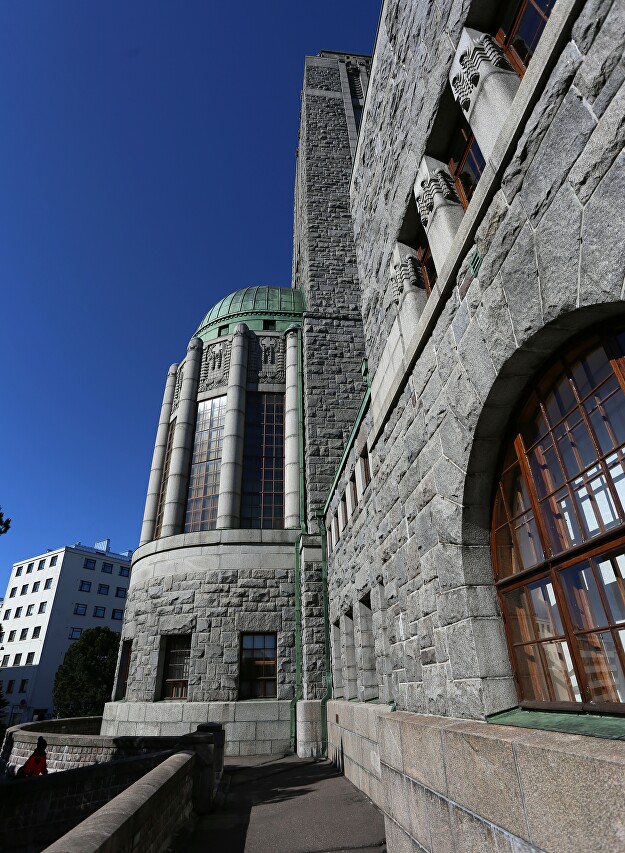Kallio Church, Helsinki
The northern end of Siltasaarenkatu Avenue rests on a small hill, on which stands a tall tower of gray granite. This is the parish church of Kallion kirkko, built in the early twentieth century. The author of the project is the famous architect Lars Sonck, one of the leading architects of the Northern Art Nouveau, which is called National Romanticism. The foundation stone was laid on July 13, 1908. Construction was completed in the summer of 1912 and on September 1, 1912, the church was consecrated by Bishop Hermann Raberg.
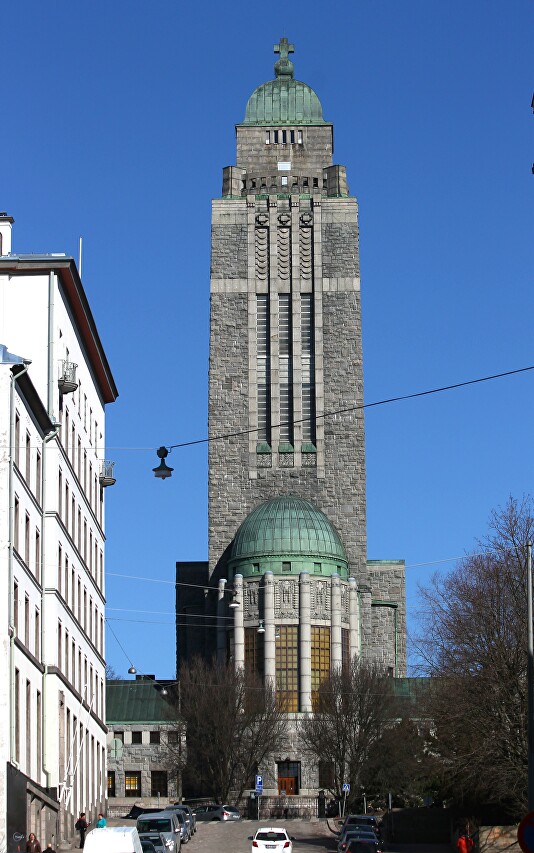
The tower of the church has a height of 65 meters above the terrain and 94 meters above sea level. In good weather, you can see the Estonian coast from the top tier of the tower. During the Second World War, the Helsinki Air Defense command post was located here.

The belfry houses seven bronze bells cast in Germany. Every day at noon and at 18 o'clock they perform a melody written by Jan Sibelius especially for the church of Kallio.
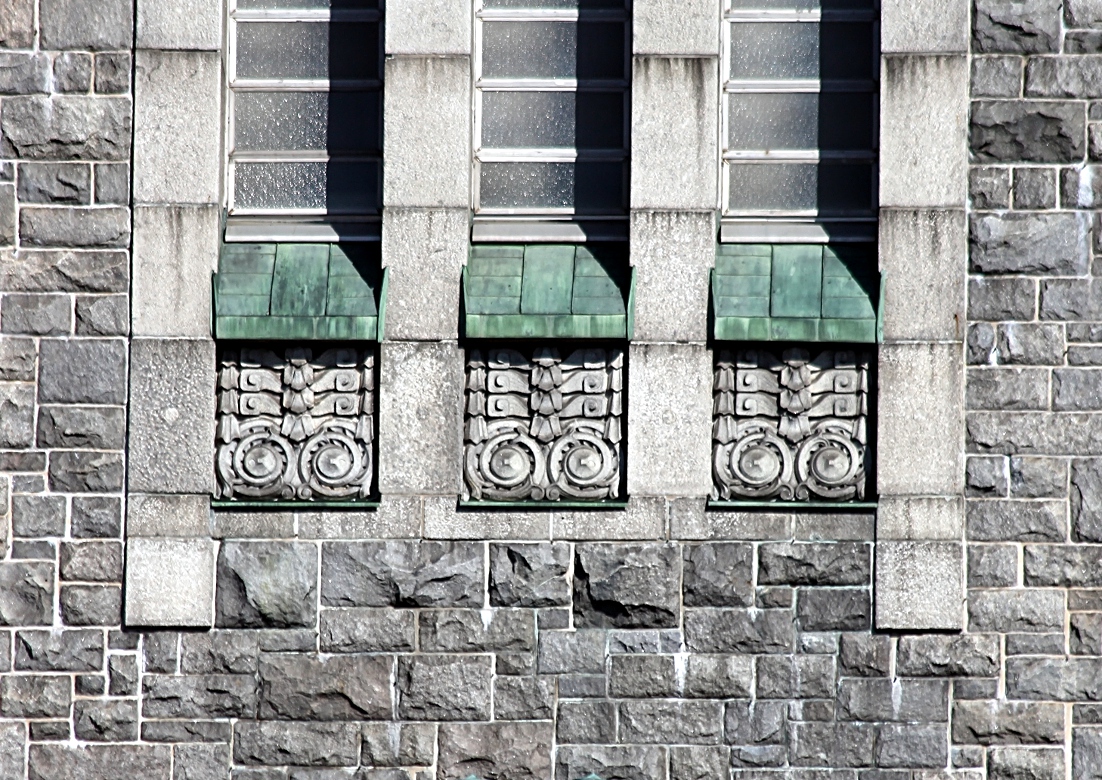
Coming closer, on the sides of the tower we see wide side wings, previously hidden by houses. The building's load-bearing walls are made of red brick and lined with gray Finnish granite.
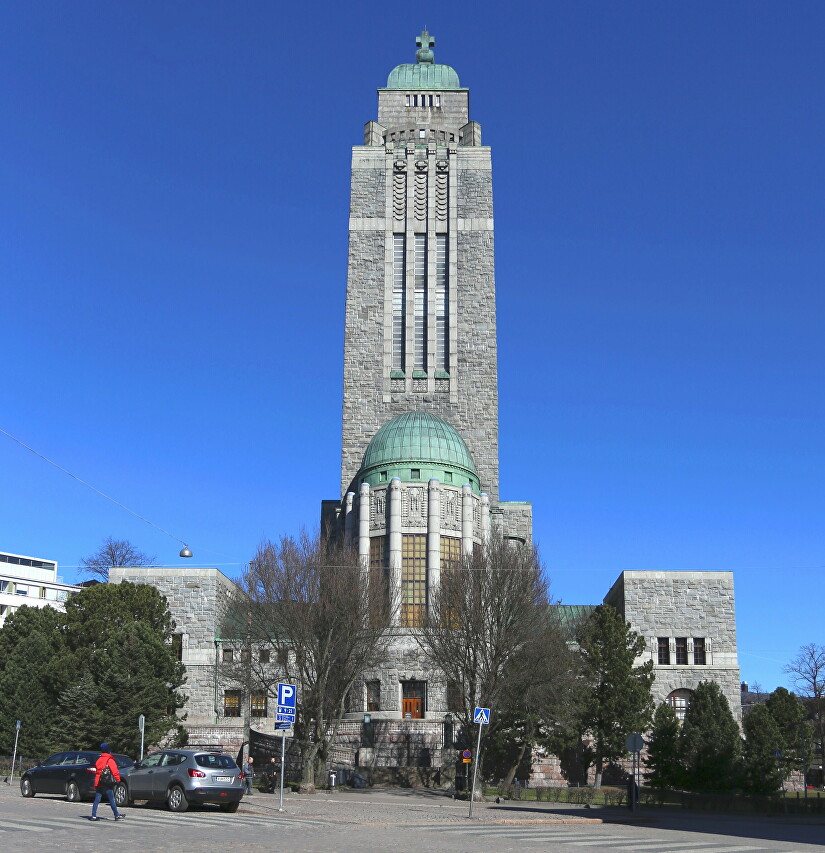
I climbed the steps, flanked by cast-iron lanterns, and found the entrance locked and a sign pointing me around the corner.
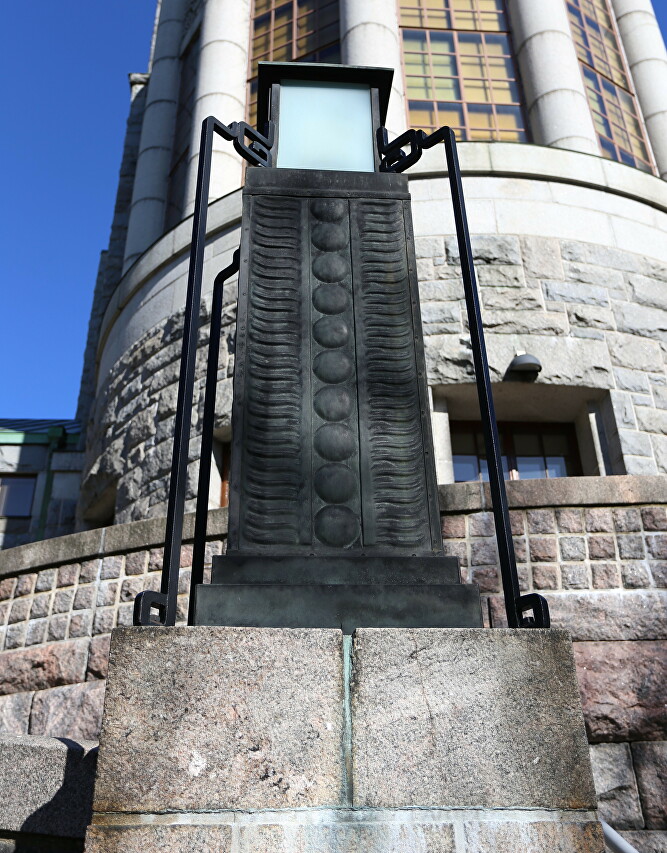
The altar volume of the church is an apse with large windows and a Jugendstil decoration located on the side of the main facade.
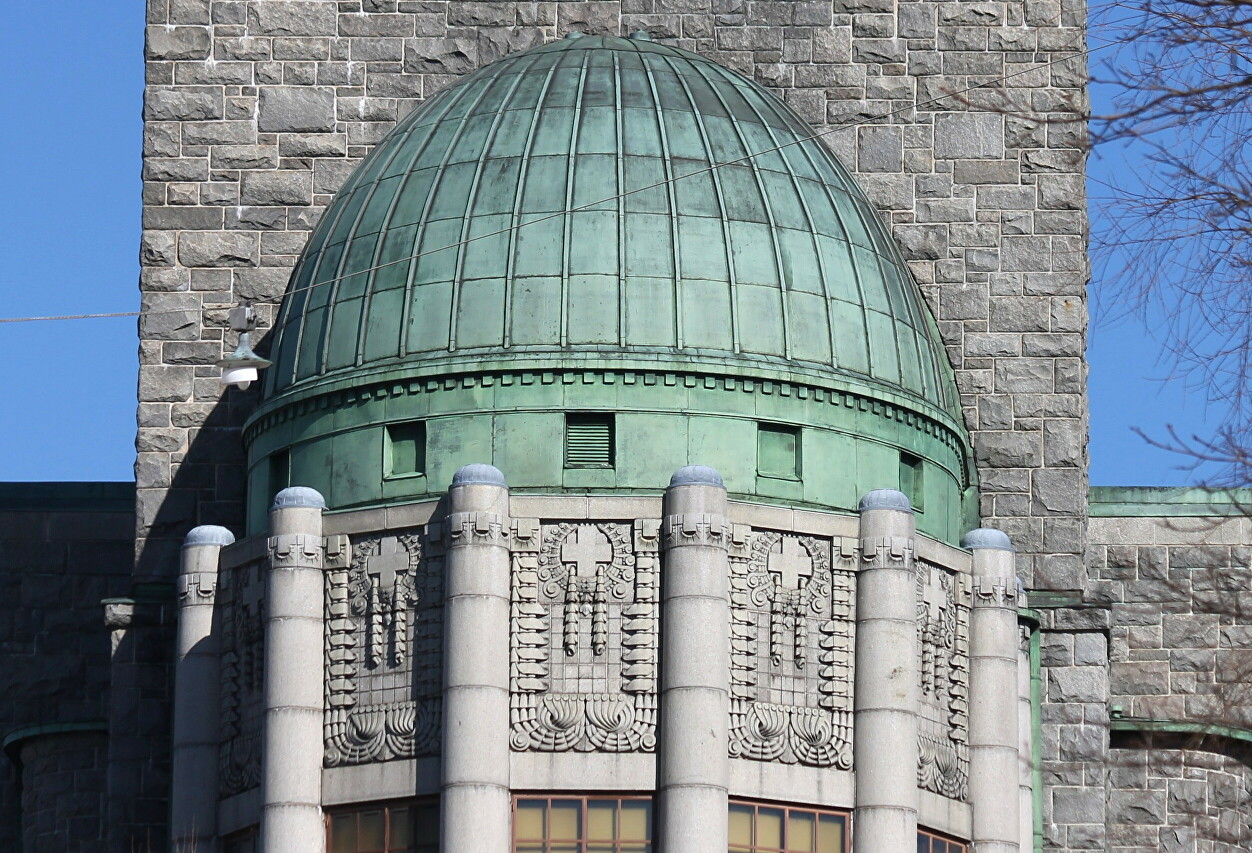
And the main portal is located on the back side of the building.
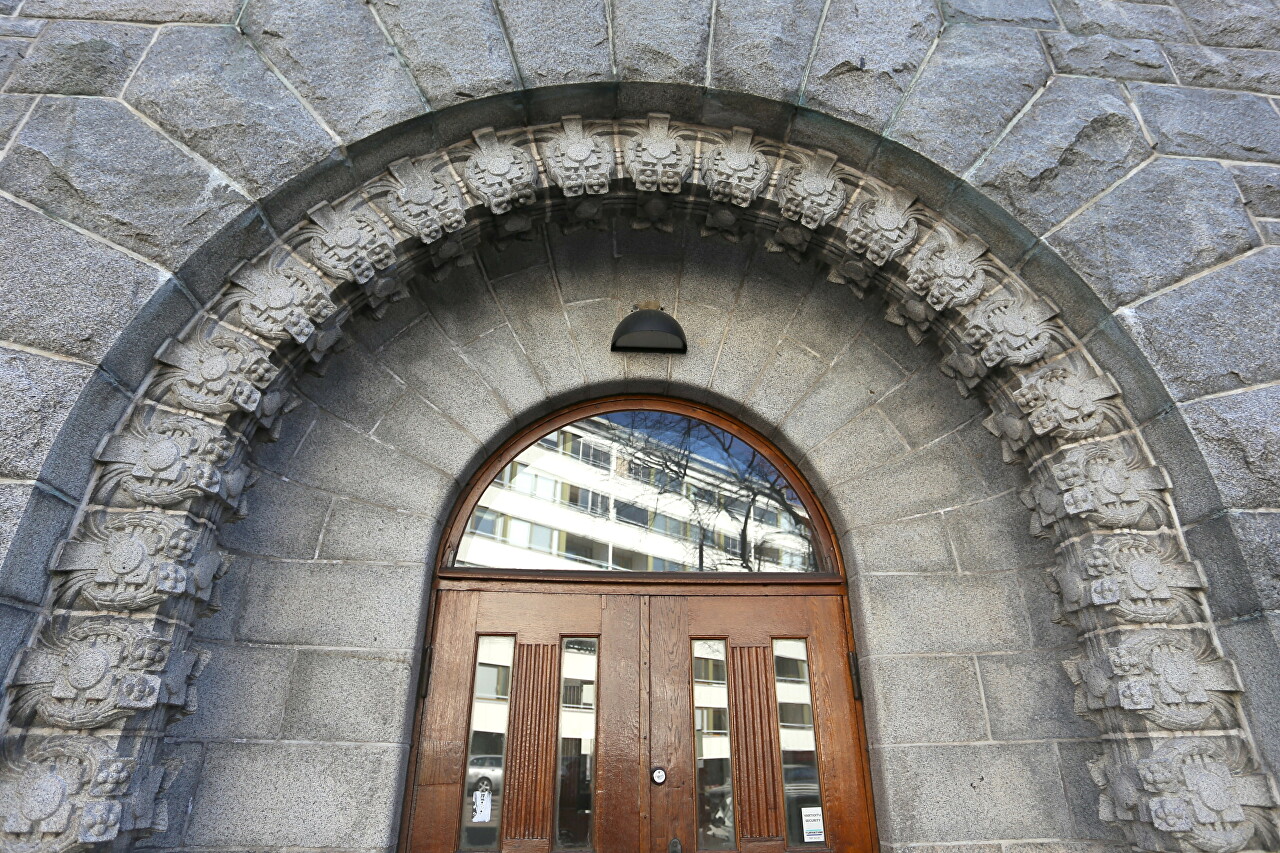
As is customary in Lutheran churches, there is a table at the entrance with prayer books that can be used by visitors.
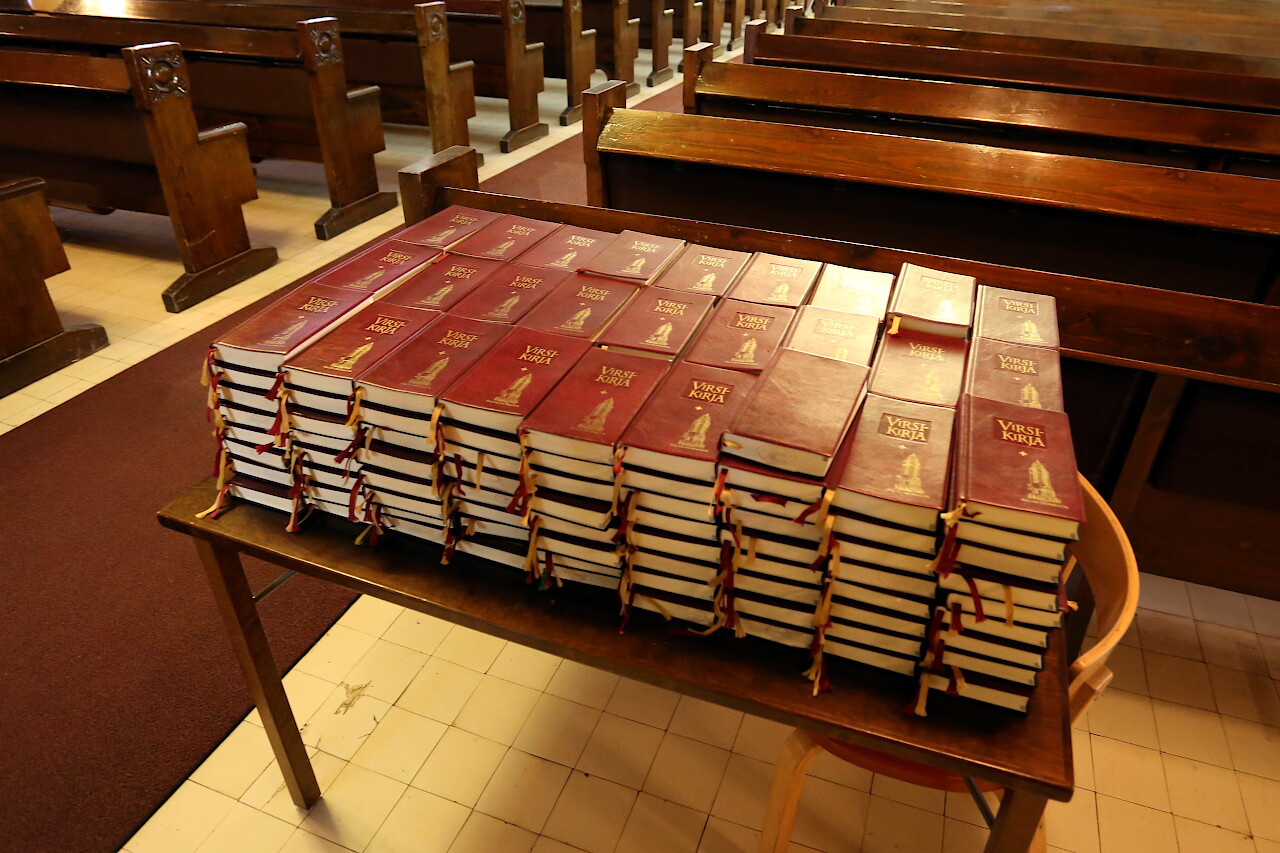
Thanks to the large windows and a glass lantern above the altar, the room is very bright.
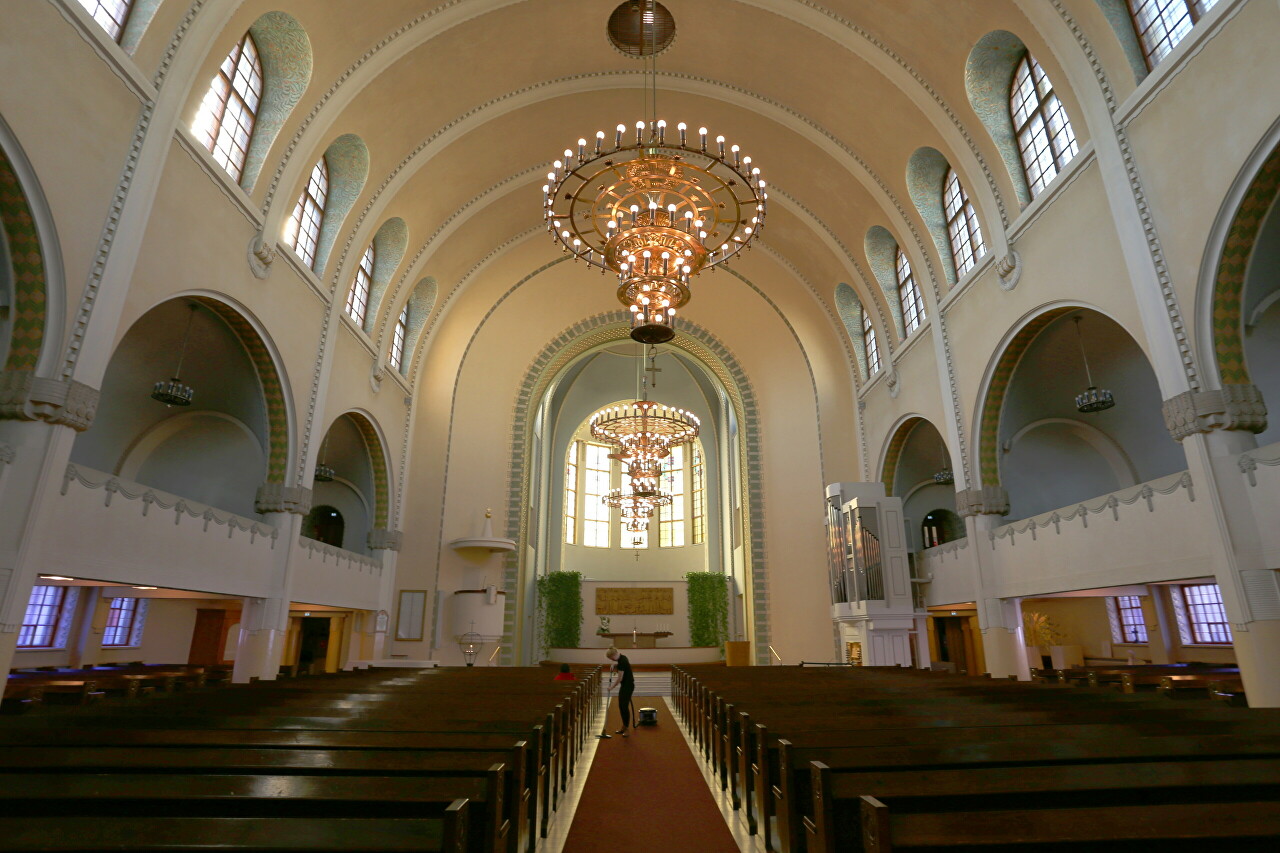
The ascetic altar is decorated with a bas-relief carved from wood by the artist Hannes Autere. The bas-relief depicts a scene of Jesus communicating with people in early 20th-century clothing. The carver used real residents of the Kallio quarter as models.
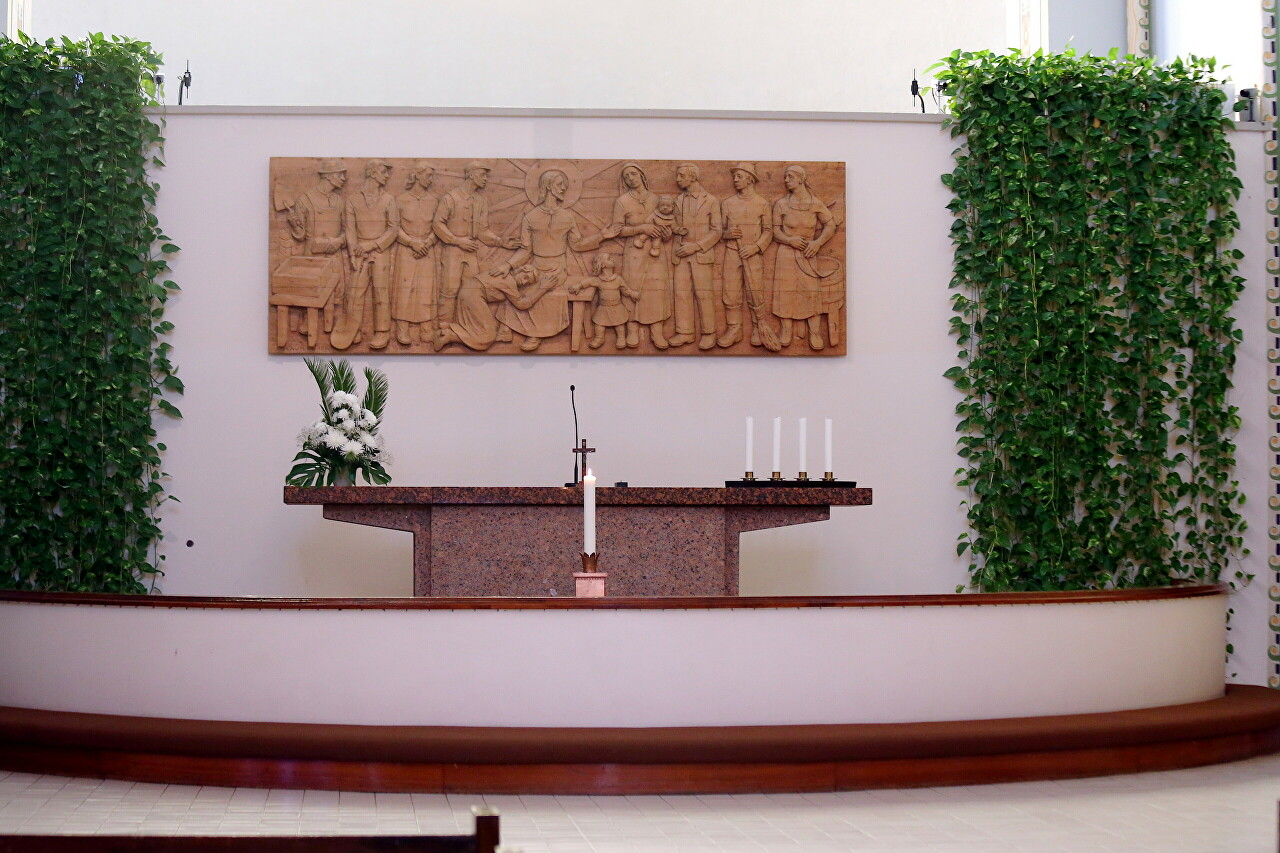
Above the altar is a large crucifix, also carved from wood by Hannes Autere. The bas-relief and crucifixion appeared in the church in 1956.
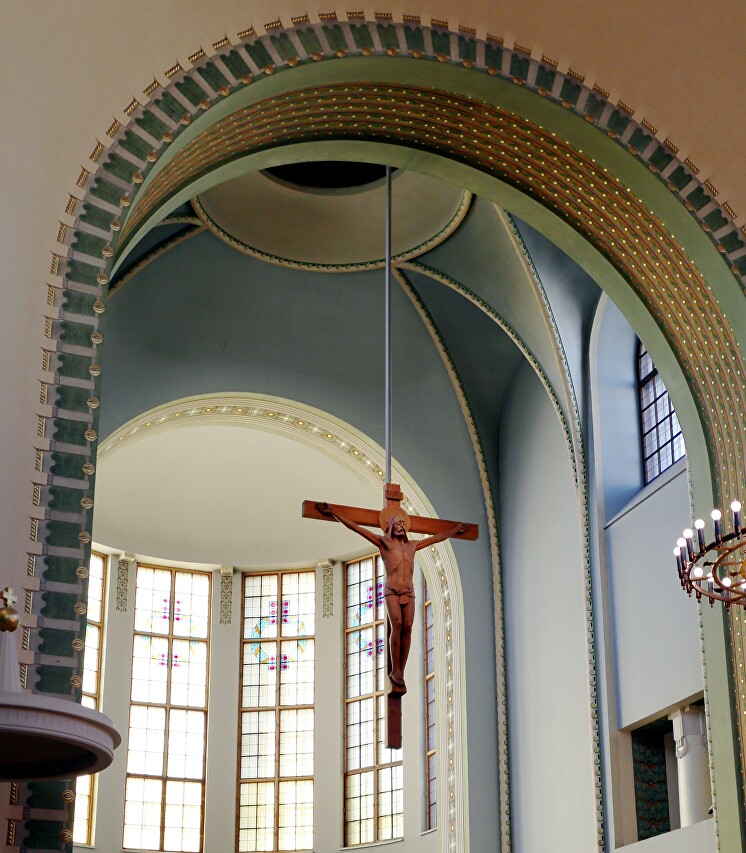
Walls, ceilings and window openings are decorated with ornaments decorated with colored ornaments depicting vegetation.
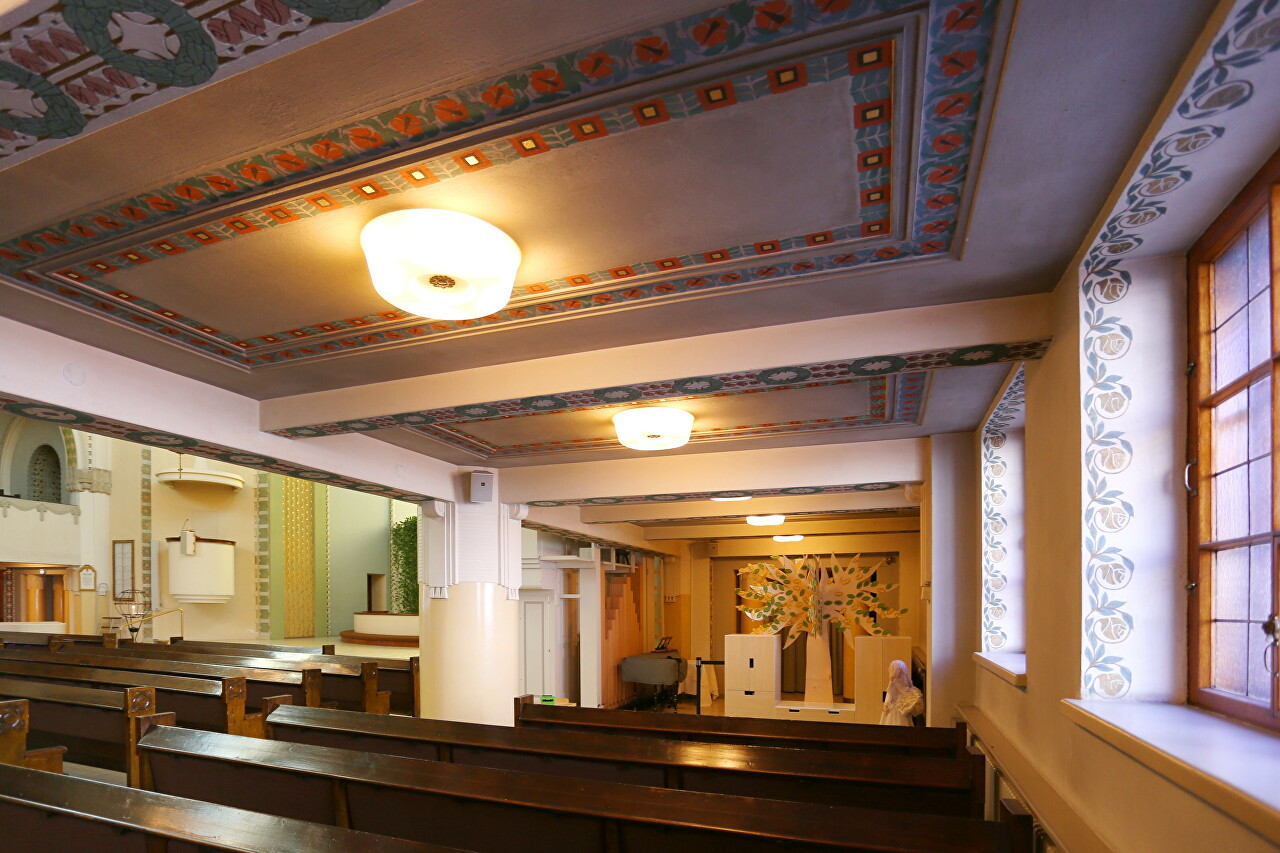
The decor style is very original, here you can see the features of Art Nouveau and Art Deco.
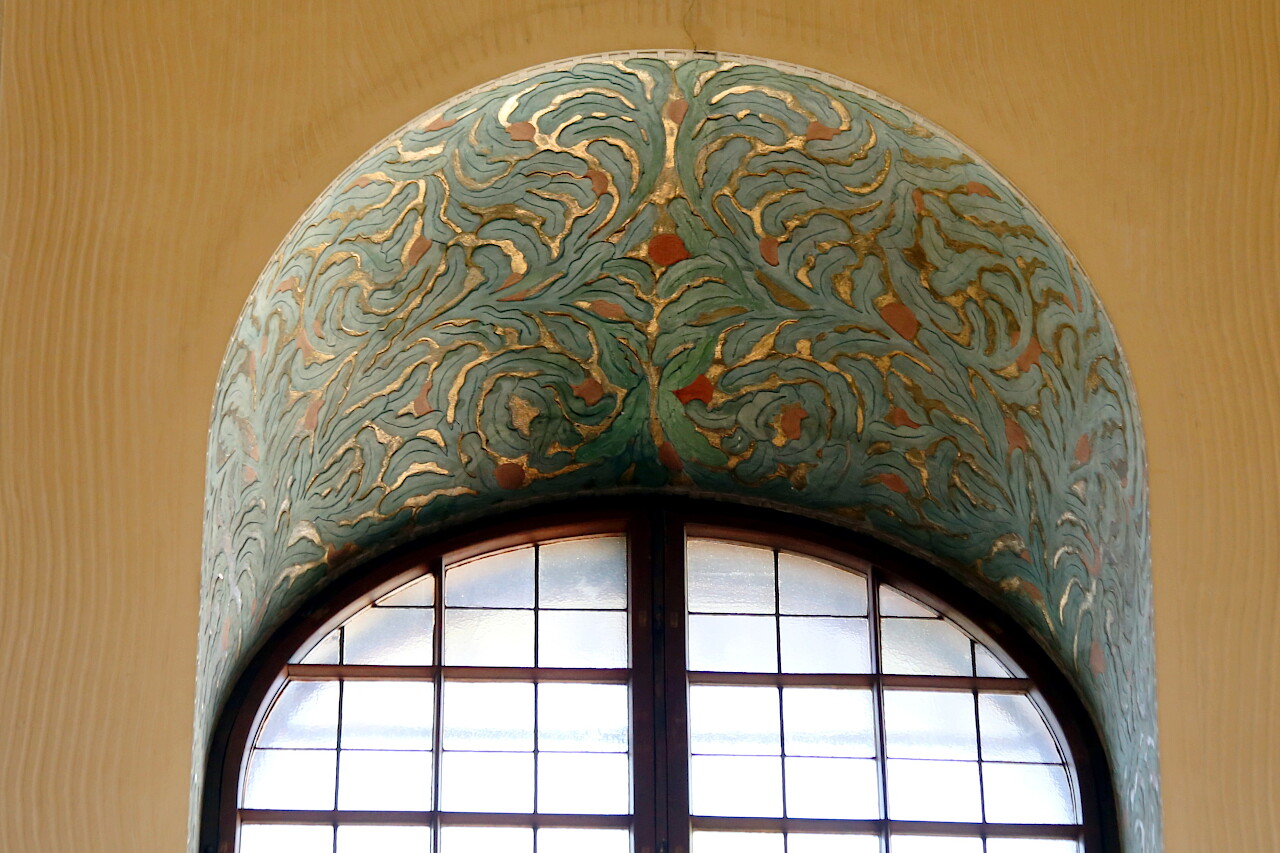
The Jugendstil is more restrained than, for example, Spanish or French Art Nouveau, and such decor is not so common in Scandinavia.
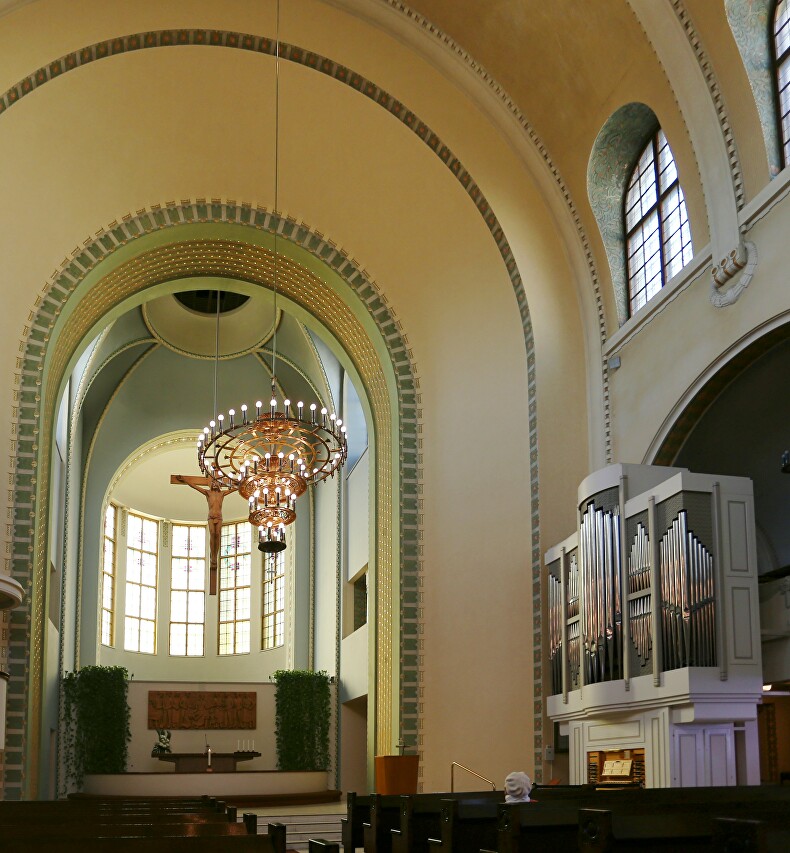
The massive chandeliers are made of brass and designed by Paavo Tynell, a renowned Finnish lighting designer.
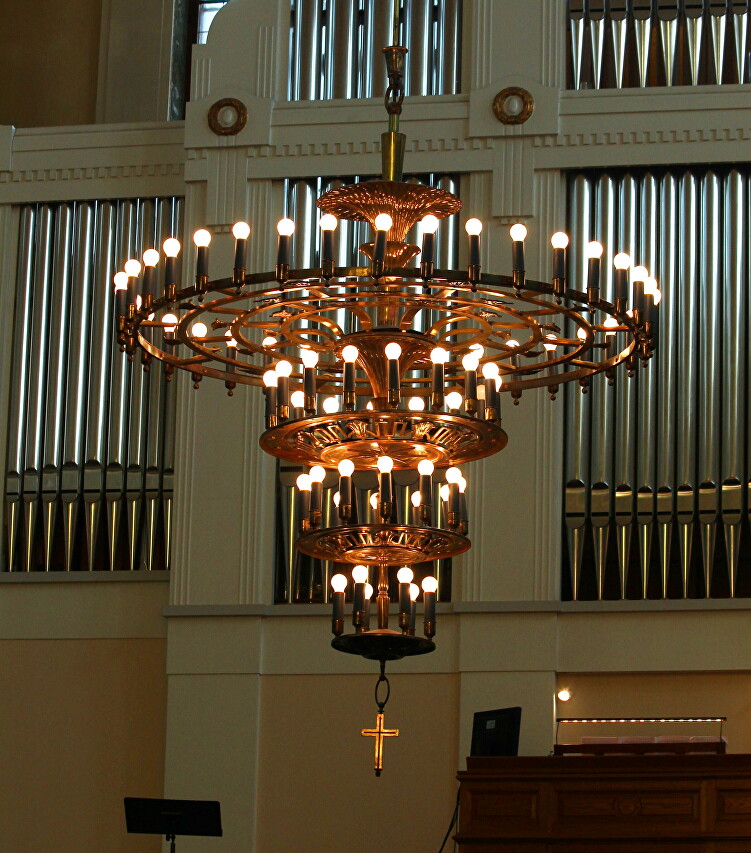
Initially, an organ of the famous German firm Schlag & Söhnen was installed in the church.
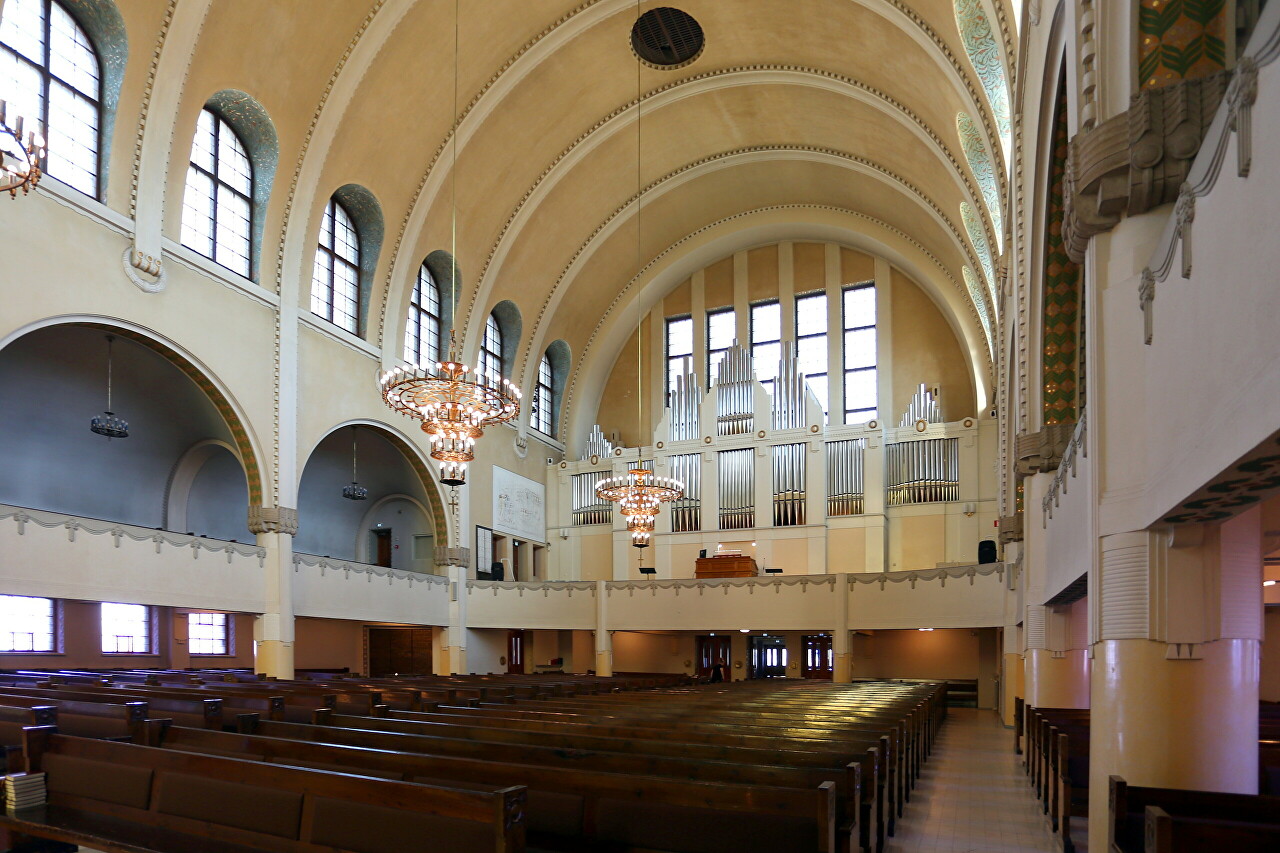
In 1970, it was replaced with a new one made by the Swedish company Åkerman & Lund Orgelbygger. The church building has excellent acoustics, and concerts are often held here.
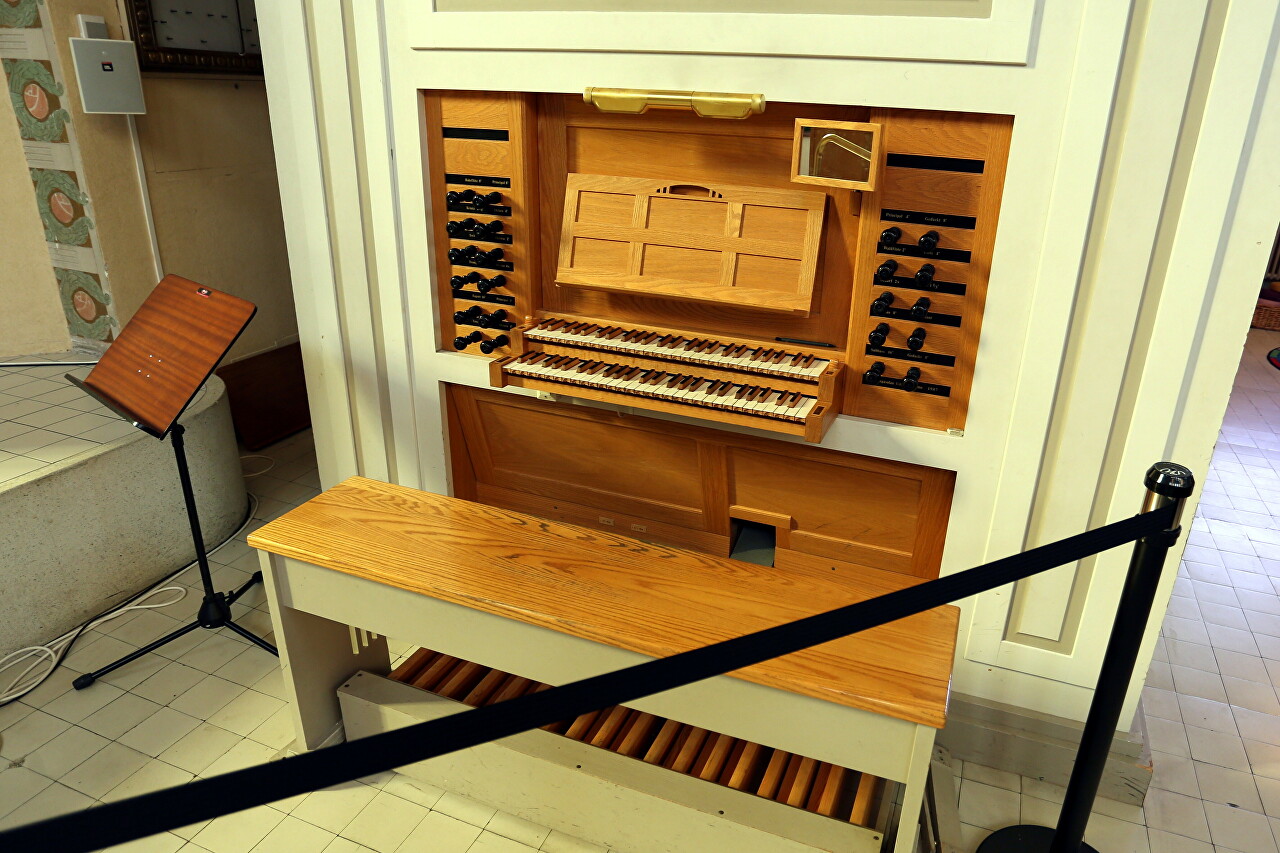
The main organ console is located in the gallery. Here I drew attention to the monitor-technological progress is no stranger to sacred music - the organ has a computer control system. When I was in the church, the organ was being tuned.

The main portal is flanked by two small columbariums.
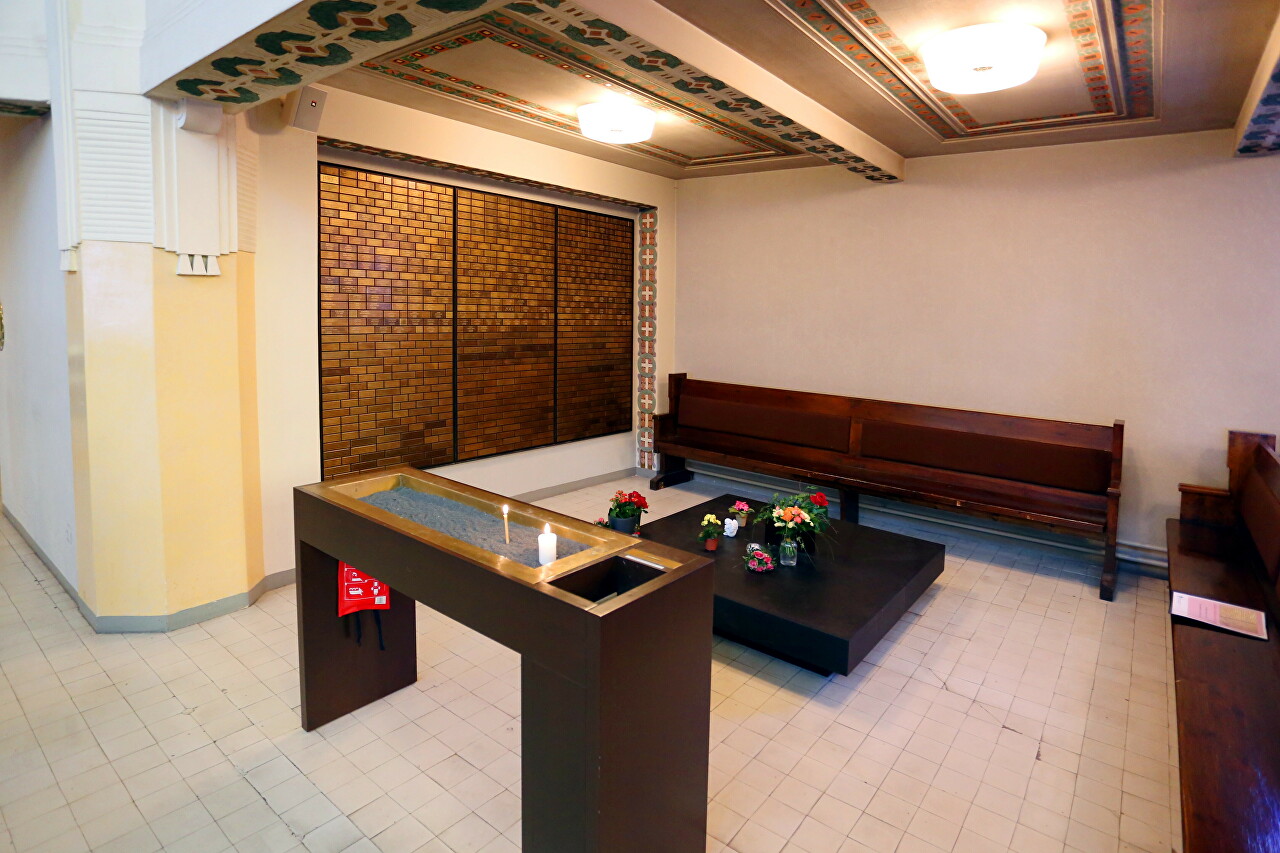
Urns with ashes can be stored in cells for a limited time, then they are transferred to the cemetery, or to the tomb for important persons located in the basement of the church. The underground columbarium is designed for 2500 urns.
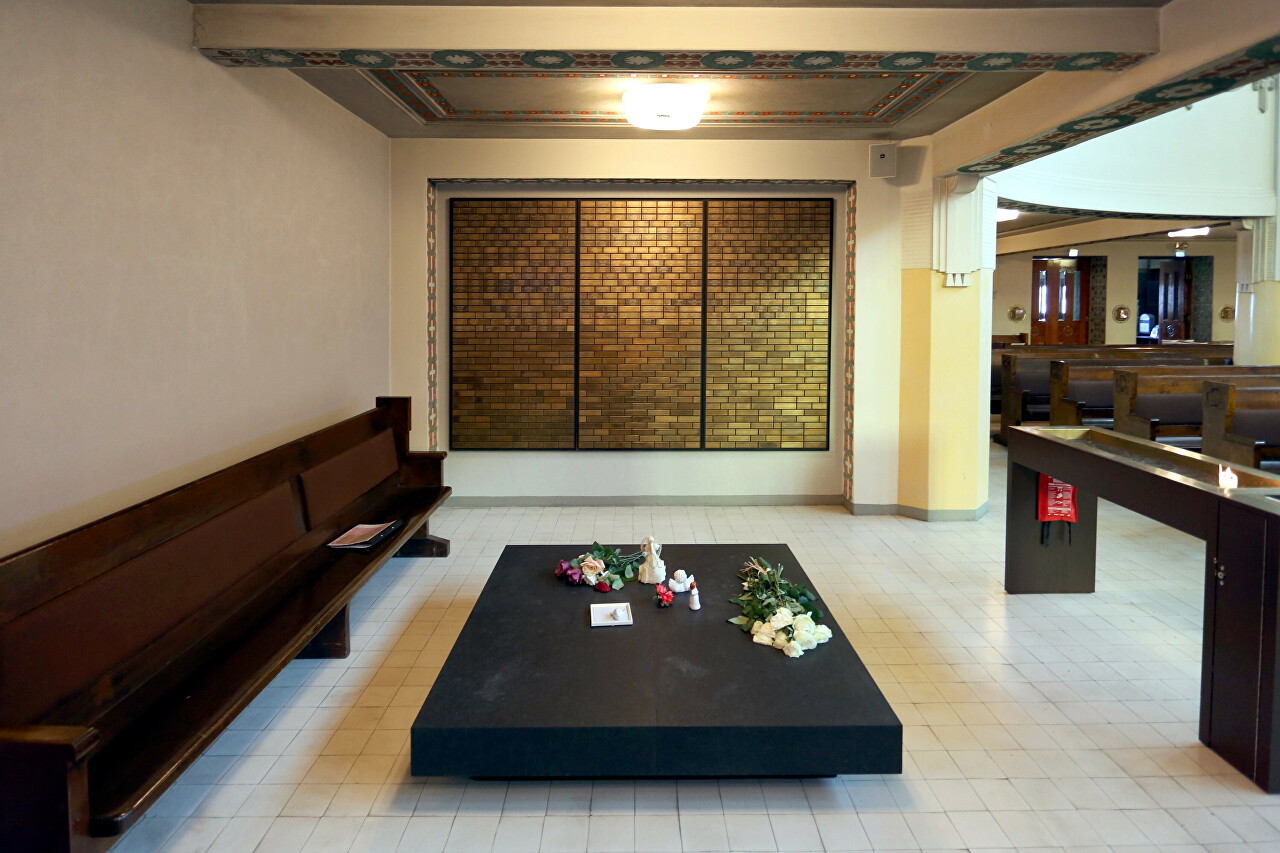
The church even has a children's corner designed with a Biblical theme.
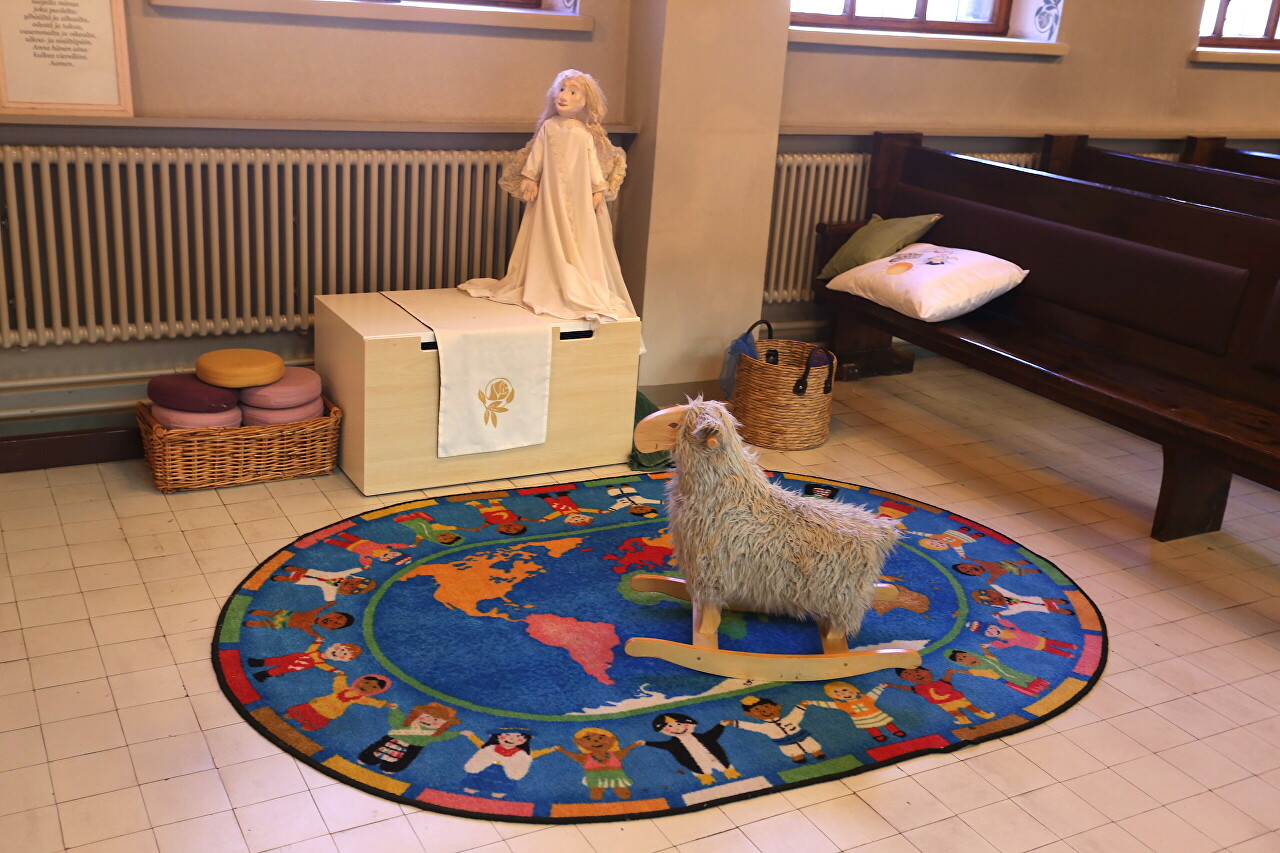
The church is open daily, on weekdays from 7 am to 9 pm, on weekends from 9 am to 7 pm, admission is free.
